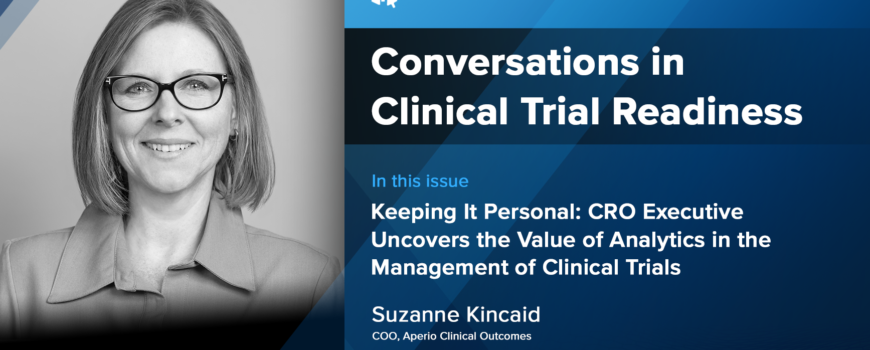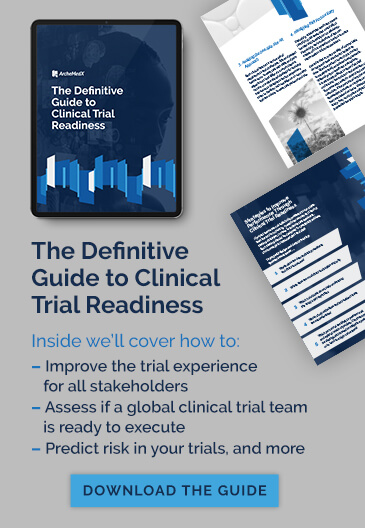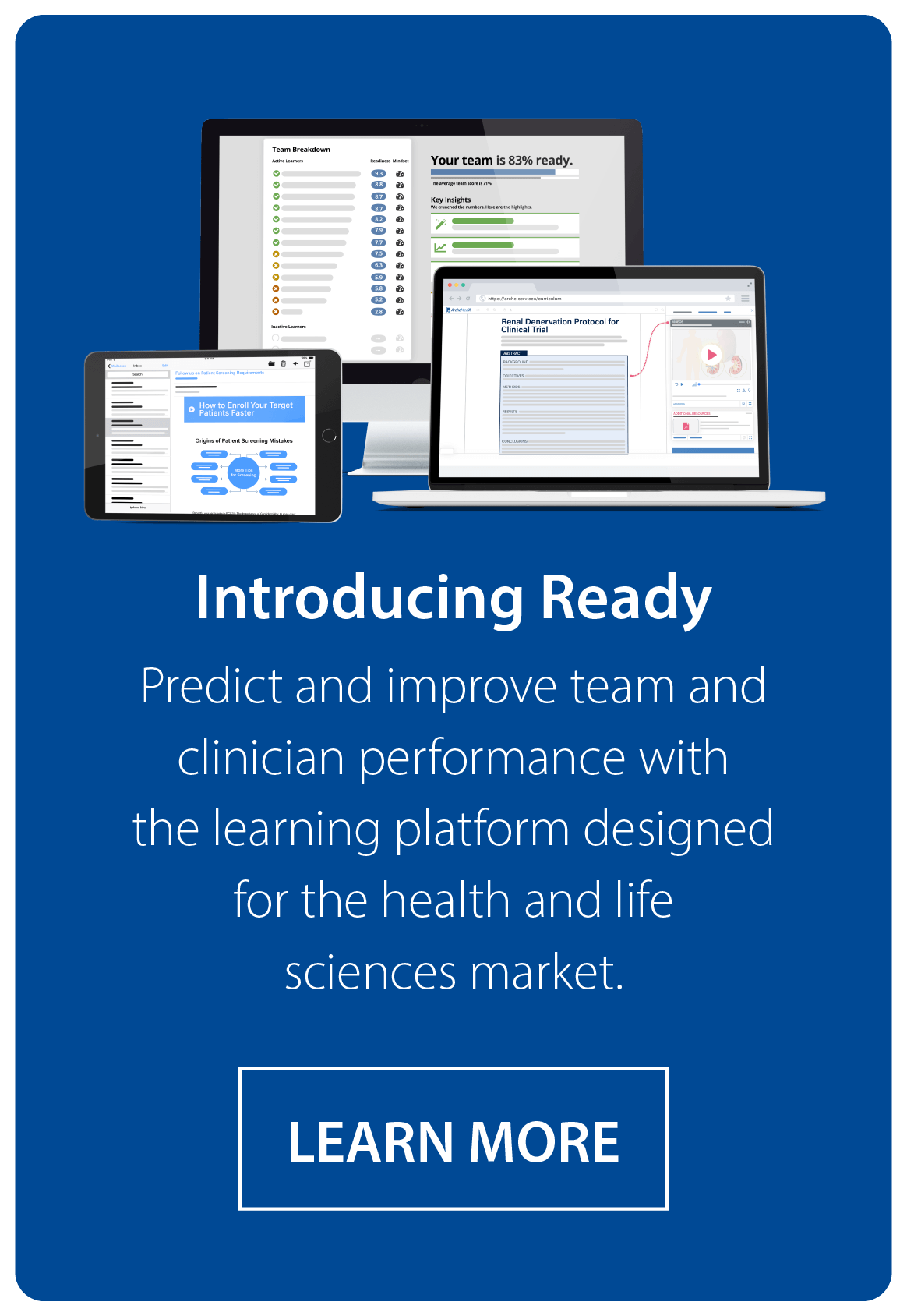Wecome to another issue of our interview series Conversations in Clinical Trial Readiness, by ArcheMedX.
Check back regularly for more.

We recently talked with Suzanne Kincaid, Chief Operating Officer at Aperio Clinical Outcomes, a CRO based in the Research Triangle Park area of North Carolina. We wanted to share these excerpts from the conversation:
ArcheMedX:
What do you find are the biggest concerns for teams during the preparation or conduct of a clinical trial?
Kincaid:
It is so important for the sponsor to have a clear vision of what they want to accomplish. Ideally the protocol outline, inclusion/exclusion criteria, and study procedures are set. Then, once the sponsor has started developing a relationship with a potential vendor, it’s important to share clear expectations between the CRO and the sponsor — understanding, for example, what they want their day-to-day interactions to look like.
We are truly site centric. We design everything from the start with the site in mind, and consider how we can make this a good experience for them. Key to this is clear communication. Sites understand things can change. Once you start going out to sites, it’s important to have a solid study design — especially in regard to the inclusion/exclusion criteria. The sponsor also must be clear on the procedures and equipment that will be required to conduct the study. If any of that changes while the sponsor is in the planning stage, it must be communicated back to the sites what the changes are — and the sites must let the sponsor know if they can still meet the commitment. You don’t want any surprises at the initiation visit with the site.
ArcheMedX:
What sort of surprises?
Kincaid:
You could find that a site no longer has the right patient population to offer you if the inclusion/exclusion criteria has changed or if you have introduced procedures that vary so much from the standard of care at the site that the site is unable to participate. Alternatively, there may be hospital policy that prevents the site from doing certain things that you now require in your clinical trial. Sponsors don’t always think about how tweaking seemingly small things in the protocol can impact the site.
ArcheMedX:
Once you’ve established the relationship and you’re off and running, how do you get site staff prepared?
Kincaid:
We like to do that on a just-in-time basis, because the closer the site is to opening for enrollment, the better. If they’re not able to enroll a patient right away, they will lose a lot of the learning. Beyond that, it’s about face-to-face time, assessing their engagement, making sure they have everything they will need, collaboration and commitment, person-to-person.
ArcheMedX:
Are there any tools you have tried or used as an alternative for face-to-face meetings?
Kincaid:
We have developed tools for site training that cross-check who the site personnel are, which activities have been delegated to them by the principal investigator, and whether they are qualified. And we have a matrix for what they need to be trained on versus the tasks they will be doing. We build this prior to the site initiation visit, go over it with the staff during that initiation, and then check in frequently throughout the life of the study to make sure everyone who’s conducting the study is appropriately qualified and has received proper training.
ArcheMedX:
How often do you check in on staff over the course of the study? When you do check in, do you find the staff are still measuring up?
Kincaid:
That is a large challenge in clinical trials, especially at bigger centers that tend to have a lot of staff turnover. You’re not always aware of staffing changes when you’re not on site. We try to keep an eye on it with requests such as access to the EDC system for new people, and use that as a trigger. We use our robust set of tools for reconciling the delegation log and training documentation and review this at every visit to the site. We want to make sure all new study team members at the site have everything they need to be successful.
ArcheMedX:
How do you train the new people?
Kincaid:
We believe it is best to educate people onsite. When time doesn’t allow for that, we hop on a web conference with them. There’s still very much a human element to it.
ArcheMedX:
How might you like to improve on this?
Kincaid:
We have a lot of very helpful and efficient systems, but unfortunately every company has different systems, and I think it can be difficult for the sites. CROs have different systems, sponsors have different systems, and a site that’s conducting multiple trials is then using multiple systems, so it can be very burdensome for the sites.
I wish the industry could adopt a best-of-the best system and all go with it. But then, what would that do to our competitive marketplace?

ArcheMedX:
Do you have any immediate plans to revise any of your processes?
Kincaid:
In 2020, our focus is going to be on more analytics and centralized monitoring. It doesn’t eliminate the need for on-site monitors; we will just use them more for the skills and strengths they have rather than having very highly skilled professionals checking transcriptions.
ArcheMedX:
Anything else you’d like to share with us?
Kincaid:
I’ve seen a lot of changes in clinical trials in the past 25 years, and I’m really excited about the advances and the technology enabling them, but the human aspect – the relationships, the experience, and the job knowledge – can’t be overlooked.
Something that’s disappointing for me is that despite all our technology, we still see egregious mistakes at some companies. In the site audit consulting work we do, we see sites grossly over-enroll beyond what they were supposed to enroll in a study. We see missing records . . . It disappoints me that this can still happen in 2020. We are excited about the impact clinical trial analytics will have on the industry, the visibility it will provide to all companies, and the early warning signals it will provide.
ArcheMedX:
We share Suzanne’s excitement about the role technology, especially the use of predictive analytics, can play in advancing clinical research and avoiding unpleasant surprises. As the industry accelerates adoption of new data models and predictive tools, the timely insights they provide can inform clinical trial leaders of potential risks and challenges sooner than they might otherwise identify. Faster recognition of critical issues and improved decision making will help all of us avert the big mistakes that often delay and derail critical studies.





